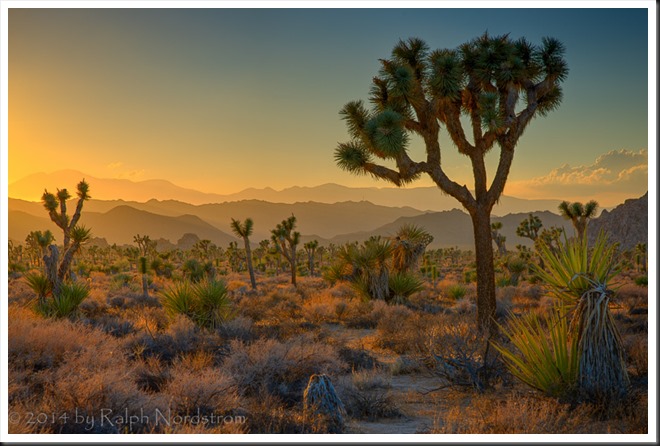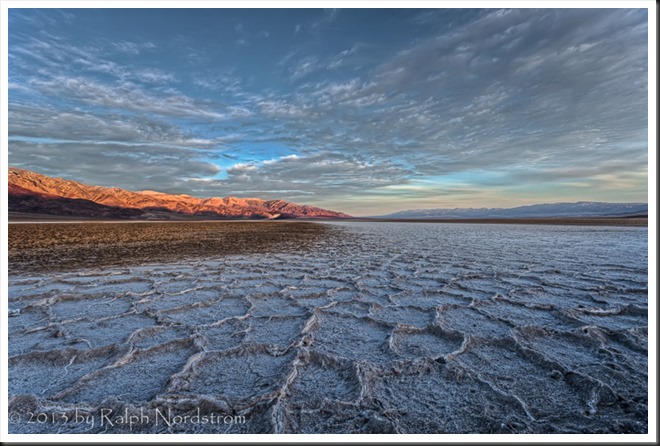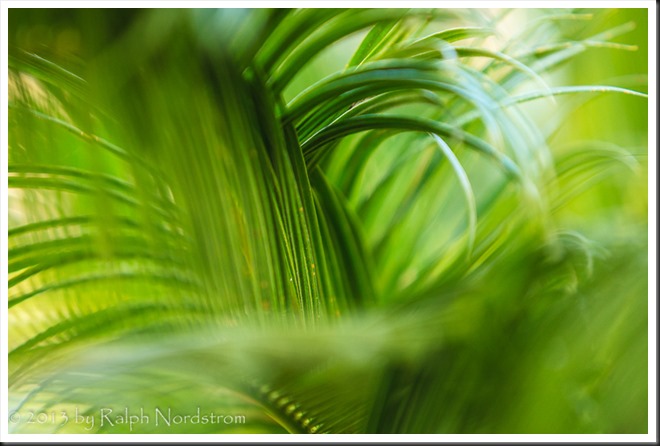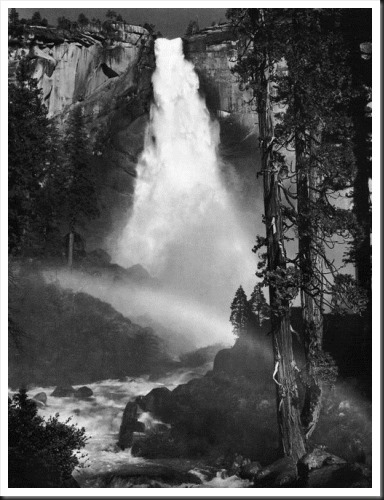In which we explore the color of light coming from different sources.
Light has several properties that are important to landscape photographers including quality, direction and color.
It is important to understand that different times of day and weather conditions will produce light of different colors. Also, when you add artificial light sources the range of colors expands.
Our brains play tricks on us when it comes to color. During twilight we don’t see that the light is a soft, delicate blue. In fact, we don’t perceive any color cast at all. But the camera is not fooled. It sees what is actually there. Take this image that I call ‘Breakfast’ as an example.
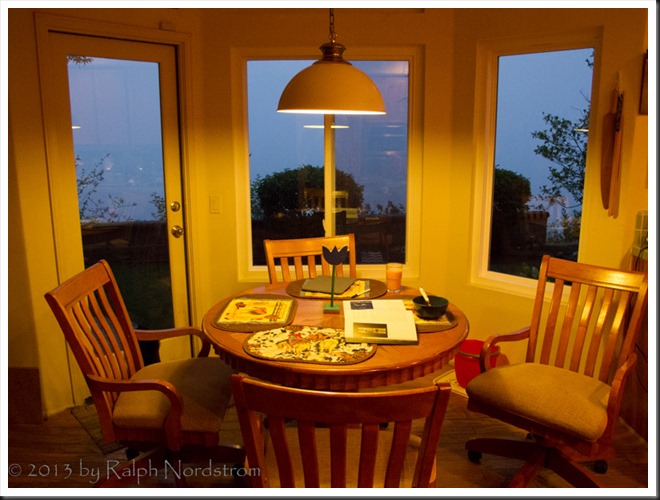
When drastically different light sources are set next to each other than our eyes can clearly see the difference in the colors. In this photograph the interior of our home is illuminated by tungsten lights which give off a very warm color. That’s why our homes feel so warm and cozy at night – because of the warm light emitted by tungsten lights. (That will change as we replace the tungsten lights with CFLs or LED lights.) Outside we have a foggy morning at twilight. The sun is about 10 minutes away from rising. And it’s clear the color of the outside light is blue.
If I was standing outside away from the warm tungsten light, my mind would trick me into thinking the light was not blue, just a neutral gray. But the camera is not fooled.
So then why are we so easily fooled? Because of perception. Our brains receive input from all of our senses including our eyes. And without us even being aware of it, this input is translated into something we are familiar with, concepts and generalizations we have learned from all the accumulated experiences of our lives. And our brain overrides (manipulates if you will) the actual blue color of the outdoor light and we perceive it as neutral.
Our perceptions help us with everyday living. They help to bring order to our lives from the endless bombardment of stimuli. But perception interferes with the photographic process of seeing. As far as day-to-day life is concerned we don’t need to see that the outdoor light is blue. But as photographers, cultivating the ability to see beyond our perceptions opens up the world to us in ways we normally can’t even imagine. And isn’t this what photography is all about?
Join the conversation, share your experiences, leave a comment. We love to hear from you. And if you know of someone else who might enjoy this article, please share it.
We do photography workshops. Come on out and join us. Click here to check us out.
You can also check out our photography. Click here.
(1396)
Like this:
Like Loading...

